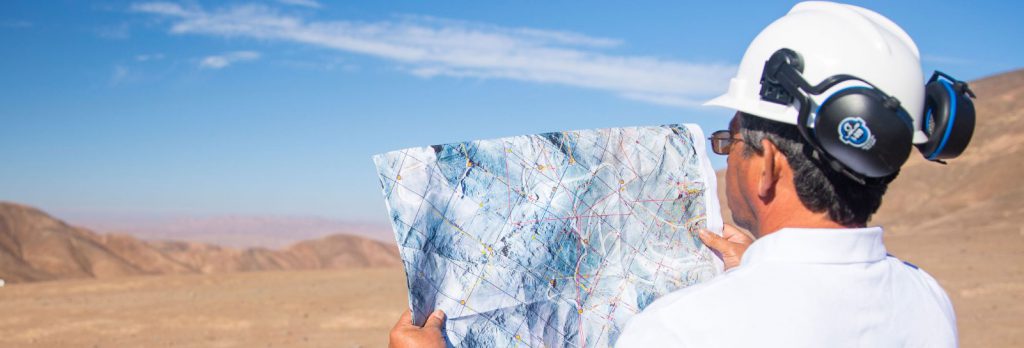Marimaca Copper drills 3.74% copper over 40 metres at Marimaca, Chile

Marimaca Copper Corp. [MARI-TSX] reported results of assays for gold and silver from hole MAD-22 and has outlined the first phase of follow-up drilling of the new sulphide target identified in diamond drill hole MAD-22, which intersected 120 metres at 1.7% CuT (total copper), including 92 metres at 2.11% CuT. The anomalous gold and silver encountered towards the end of MAD-22 is the first anomalous precious metal content encountered at the Marimaca Project, northern Chile.
Highlights: First anomalous gold and silver identified at Marimaca coincident with higher grades of primary copper mineralization in MAD-22; 100 metres of anomalous gold (majority >0.02g/t) and silver (majority >1 g/t) from 140 metres; 40 metres averaging 3.74% CuT and 0.07 g/t gold and 7 g/t silver from 186 metres. This represents 40 metres averaging 3.84% CuEq from 186 metres,
MAD-22 intersected over 240 metres of continuous mineralization from surface with a high grade primary mineral zone at depth . This reconfirms strong association of high-grade chalcopyrite with high magnetic susceptibility; encountered massive chalcopyrite over an interval of 92 metres with an average copper grade of 2.11% CuT from 140 mteres; located immediately adjacent to the eastern wall of the whittle pit limits for the October 2022 MRE, indicating potential for high grade, open pit-able mineralization. Indications are that mineralization relates to a second, later stage, mineralizing event when compared to the broader Marimaca Oxide Project.
A large scale magnetic anomaly previously identified is believed to be prospective for mineralization similar to the primary zone in MAD-22. A five-hole diamond drilling program is planned, and rig mobilized, to follow up results of MAD-22 with 50-metre to 100-metre step-outs from MAD-22. First phase tests are approximately 300 metres of strike potential around MAD-22 with a target width of up to 300 metres.
Drilling will test deeper extensions below the limit of drill hole MAD-22, which terminated in mineralization. Second phase of up to five holes based on results of first phase increase tested strike length to +500 metres. The program is fully funded to test the sulphide target.
Sergio Rivera, VP Exploration of Marimaca Copper, commented: “MAD-22 was a spectacular drill hole in terms of grade, continuity and the shallow nature of mineralization, and provided us with valuable information with respect to potential sulphide feeder zones for the Project. As we have noted in previous releases, there is a strong correlation between magnetic anomalism and the presence of primary copper mineralization. MAD-22 once again strongly confirmed the relationship. It has also been noted that outcropping zones with higher prevalence of magnetite, in veins and stringers, could be a good surface vector for future exploration targeting Marimaca-style IOCG (Iron Oxide Copper Gold) deposits.
“In 2020, we completed high resolution magnetic work and developed a 3D model which highlights a large-scale magnetic anomaly, which we estimate to be over 175 million 3 meters in volume, or approximately 475 million tonnes of high magnetic susceptibility rock mass. MAD-22 was drilled into the southern extent of this anomaly, which extends over strike of approximately 1.0 km and to a depth of around 800m below surface.
“The result of MAD-22 is an exciting confirmation of our view that there is significant sulphide potential below the MOD. We have mobilized a rig to complete an initial follow up program to test the immediate 300m to 500m of strike around MAD-22. Based on the results we achieve we will then plan an expanded program.”
Following extensive drilling and geophysical work, the Company developed an exploration model which was based on a strong correlation between higher grade chalcopyrite mineralization and high magnetic susceptibility, which was used to vector for future deeper drilling campaigns.
The company plans to step-out drill an area covering approximately 500 metres of strike potential immediately around MAD-22 including Section N7.435.800 in the north, where the previous high grade remnant chalcopyrite intersections were noted. The target zone is approximately 300m in width, east to west, across this area. Given the scale of the magnetic anomaly, the Company believes there is potential for significant depth extensions, but for the initial program, 300-metre drill holes are planned, which will extend the depth of MAD-22 by approximately 60 metres.
Drilling will be completed in two phases, with the second phase final design being based on the results from phase 1 and the company is fully funded to deliver both phases based on current work programs.
In July 2020, Marimaca released the results from an initial drone mounted high resolution magnetic survey covering the Marimaca Project. Results showed a large scale magnetic anomaly immediately adjacent and downdip of the Marimaca Oxide Deposit (MOD), within the same geometry as the interpreted downdip extensions of the key controlling structures for the MOD.
